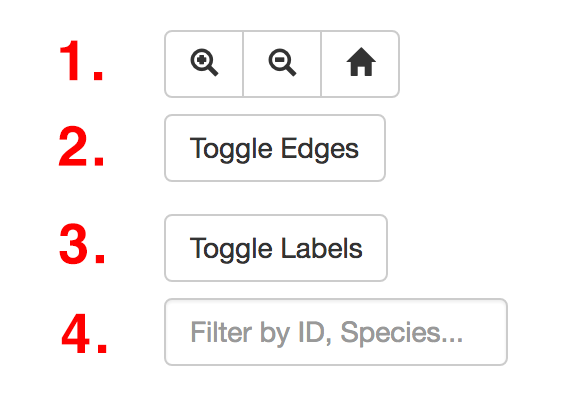This site contains supplementary interative sequence similarity networks for Genomic, Network, and Phylogenetic Analysis of the Oomycete Effector Arsenal
.
In a sequence similarty network, each node represents a protein. An edge/line joining two nodes represents shared sequence similarity between the two proteins. Proteins are coloured according to their genus. Significant sequence similarity is detected using all-vs-all BLASTp homology searches.
Clicking on a protein shows information about it (e.g. Species, Order, Sequence Length, etc.)
The network can be filtered to hide/show particular proteins (e.g. by Genus or Order) using the buttons to the right of the network.
Usage

- Left to right:
- Zoom in
- Zoom out
- Center view on network
- Toggle Edges: hides/shows all edges in the network. Hiding edges improves performance
- Toggle Labels: hides/shows labels for all nodes in the network. Hiding labels improves performance
- Filter box: type a query here to filter by Protein ID, Species, Genus or Order
Additionally, for RxLR effectors, it is possible to filter according to the method that identified the candidate RxLR or if they contain a WYL motif. The methods used to identify putative RxLRs include: Win method (Win et al., 2007), Regex method (Whisson et al., 2007), HMM method using HMMsearch for cropped.hmm (Whisson et al., 2007) and identifying homologs to previously reported RxLRs using BLAST (Haas et al. 2009).
The source code for this site is available on GitHub along with additional supplementary materials.
Reference:
McGowan, J. and Fitzpatrick, D. (2017). Genomic, Network, and Phylogenetic Analysis of the Oomycete Effector Arsenal. mSphere, 2(6), pp.e00408-17.
